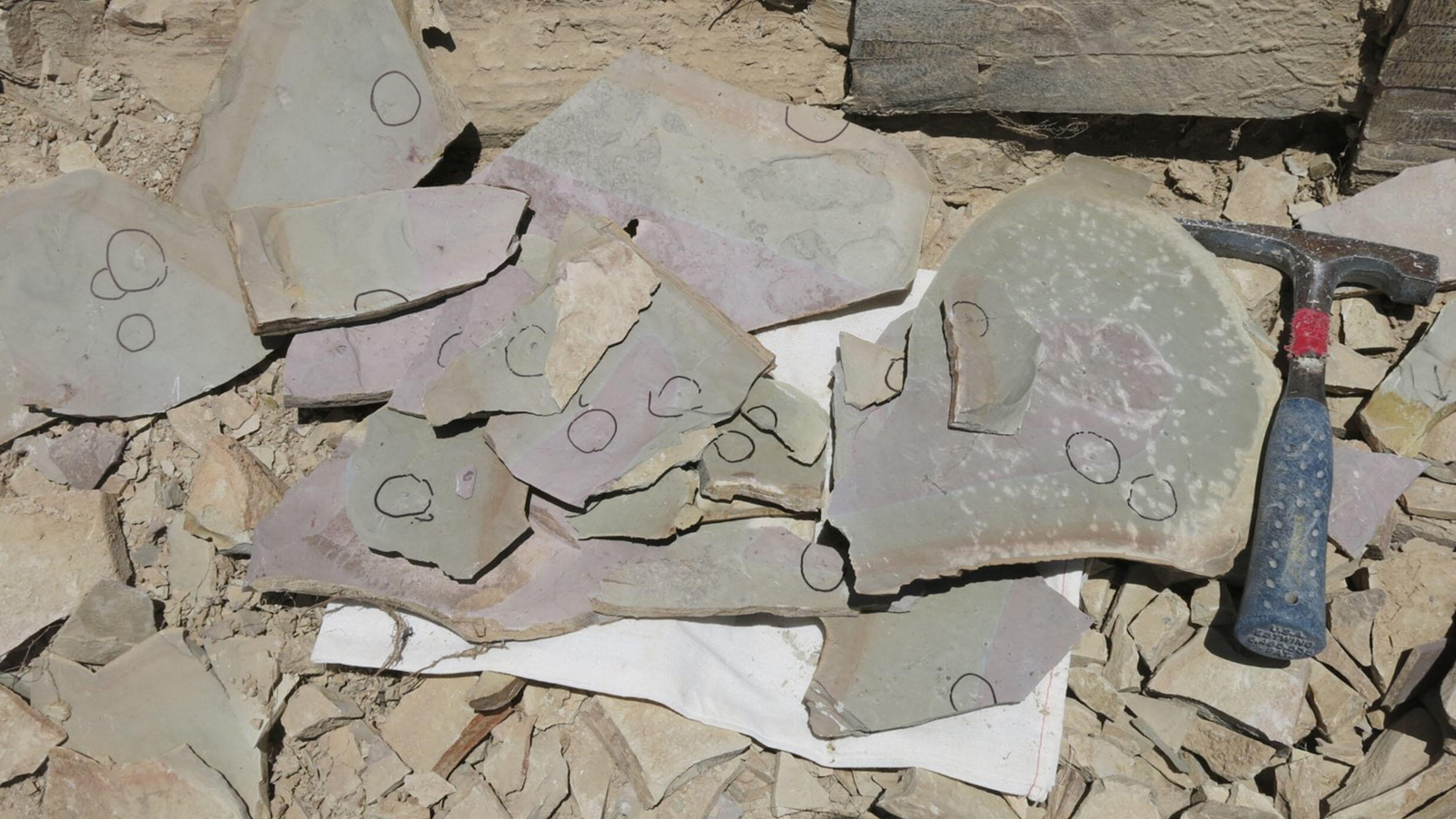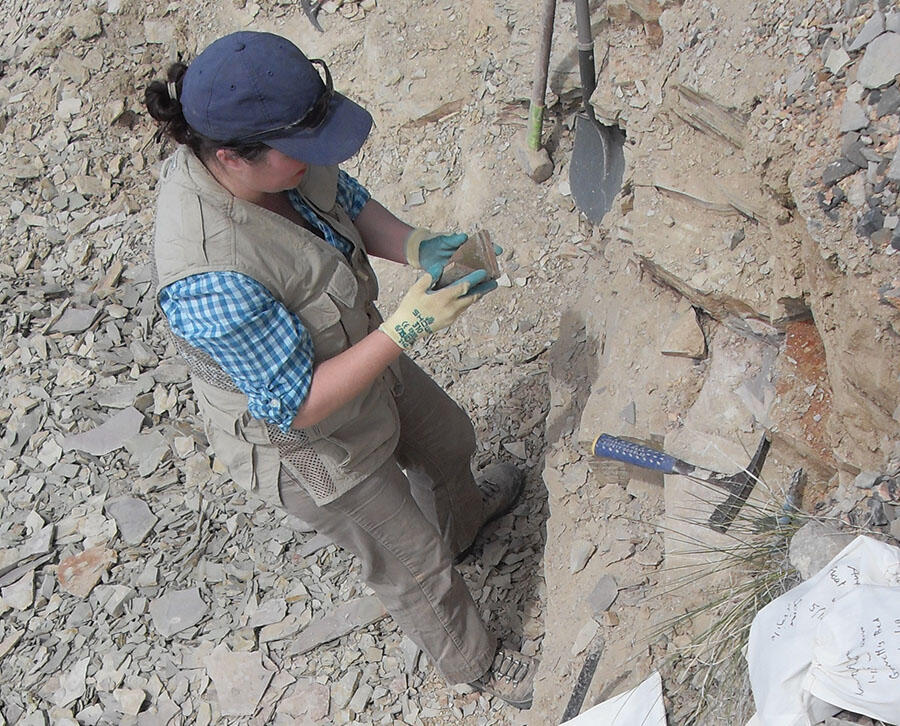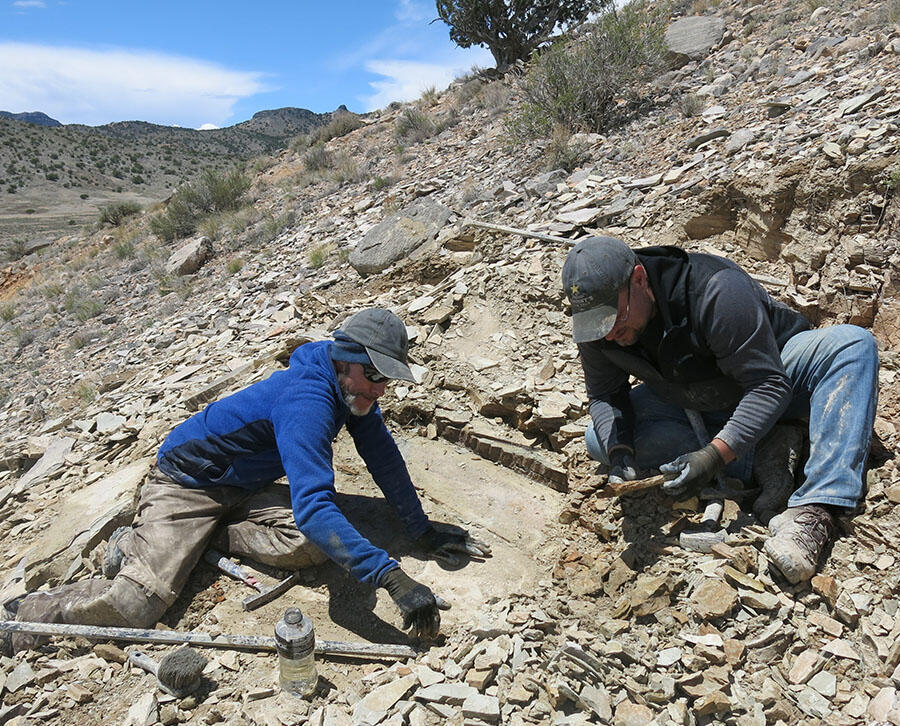 Slabs at the excavation site in western Utah with circles indicating the locations of Elrathia kingii fossils, some of which can be as small as half a millimeter long.
Slabs at the excavation site in western Utah with circles indicating the locations of Elrathia kingii fossils, some of which can be as small as half a millimeter long.M. Hopkins/© AMNH
It’s one of the most recognizable and abundant fossils in the Americas, collected by the hundreds of thousands in western Utah. But until now, it was not known how trilobites of the species Elrathia kingii grew.
Now, new work led by Museum paleontologist Melanie Hopkins describes the development and growth rate of the popular species—from hatchling to juvenile to adult. The study marks just the second time that growth-rate data has been collected for a trilobite, allowing for the first comparison among a group of extinct marine arthropods with more than 20,000 described species.
M. Hopkins/© AMNH
“There’s quite a big size range among trilobites. Some never got bigger than about a centimeter, while the largest on record is 72 centimeters (28 inches),” said Hopkins, an associate curator in the Museum’s Division of Paleontology and the study’s sole author. “Growth-rate studies like this one can help us tackle some of the big-picture questions: How did some trilobites get so big? What was the environmental context for that? And how did body size evolve over the evolutionary history of the clade?”
Trilobites are known through fossilized exoskeletons preserved in sites all over the world. They molted like insects throughout their lifetimes, leaving clues to how they changed during development. But to calculate the species’ growth rate, scientists need a large number of fossils representing all stages of the animal’s life.
 Melanie Hopkins, an associate curator in the Museum’s Division of Paleontology, in the field.
Melanie Hopkins, an associate curator in the Museum’s Division of Paleontology, in the field.M. Hopkins/© AMNH
 Museum volunteers Jake Spicer and Markus Martin at the excavation site in western Utah.
Museum volunteers Jake Spicer and Markus Martin at the excavation site in western Utah.M. Hopkins/© AMNH
“There are tons of specimens of Elrathia kingii out there but most of them are adults, and data from exactly where they were collected is inconsistent,” Hopkins said. “I needed material that I could collect from as small a section as possible that included a lot of juveniles.”
So, in May 2018, Hopkins spent five days in Utah with a crew of Museum staff and volunteers at a new fossil site said to preserve bucketloads of Elrathia kingii. By the end of the trip, they had collected about 500 specimens—many of them juveniles, which can be as small as 0.02 inches (0.5 mm) long—from a section of outcrop just 5 feet (1.5 m) long.
M. Hopkins/© AMNH
Hopkins estimated the growth rate and compared it to previously published data on a different trilobite, Aulacopleura konincki—the first time two trilobite species have been compared in this way. The two species look very similar, and Hopkins found that they also grow in similar ways. But while Elrathia kingii was smaller in early development and went through fewer molts before adulthood, it had faster growth rates, ultimately reaching sizes similar to Aulacopleura konincki, the largest of which are about 1.6 inches (4 cm) long.
In future studies, Hopkins is planning to add growth-rate data on different, more diverse-looking trilobite species to her models.
The study is published in the journal Papers in Palaeontology.